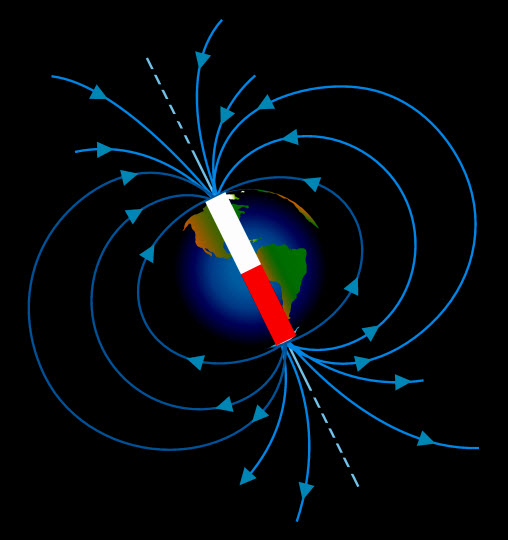A magnetic field is the area around a magnet where the magnetic force creates a magnetic effect.
It is stronger at the poles of the magnet.
Magnetic objects placed within a magnetic field would be affected in two ways - a magnetic material would always be attracted to the magnet, whereas another magnet could be attracted or repelled.
A magnetic field can be shown when placing small shavings of iron - iron filings - near a magnet. They arrange themselves in such a way that they show the magnetic field (see diagram below). Each iron filing becomes a small magnet and is attracted more strongly to the poles of the magnet.

A magnetic field can also be shown by drawing magnetic field lines. These lines would be shown by the iron filings as they line up along the field lines. The direction of the magnetic field is the same as the direction of the lines and the less space between the lines, the stronger the magnetic field.
Different types of magnets produce different arrangements of magnetic field lines.
The diagram below shows an example of magnetic field lines, the Earth’s magnetic field, as the Earth acts as a giant bar magnet:

The Earth behaves as if it has a large permanent magnet at its centre. That’s why a compass needle always points north/south. It is attracted to the Earth’s geographical North Pole.
That's a lot to think about.
Are you ready to put this into practice in some questions?








